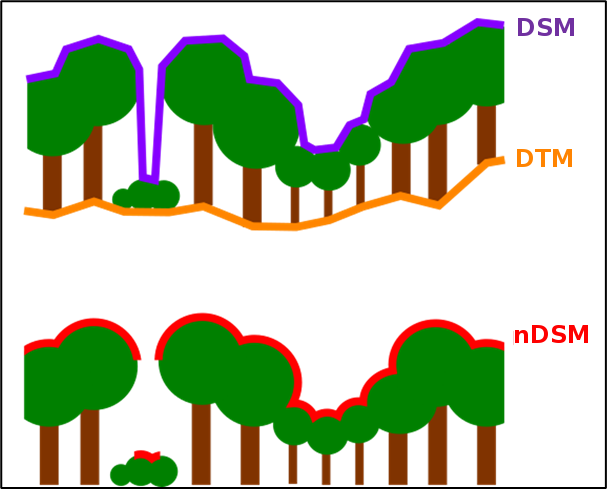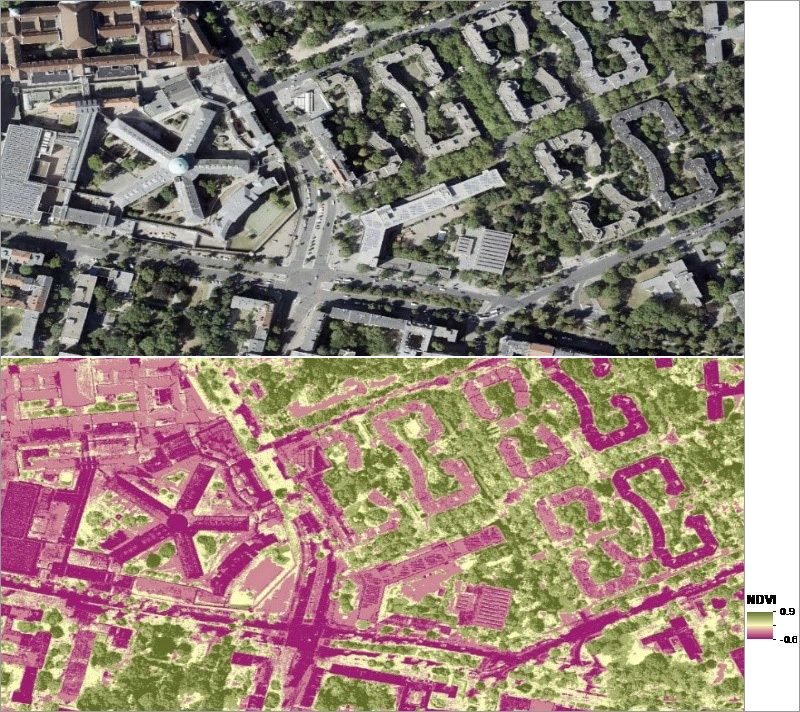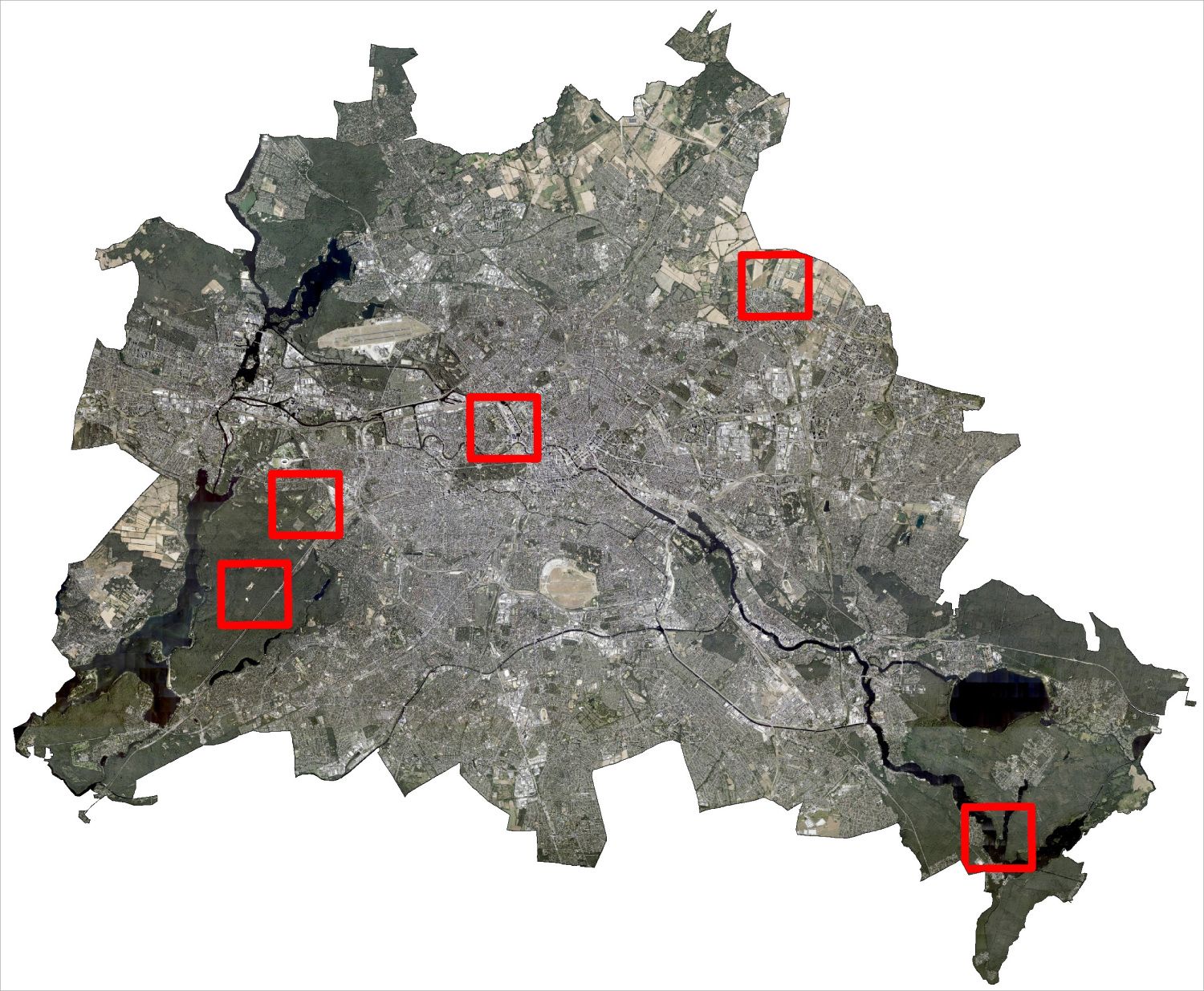Approach
The process for determining the vegetation height is based on a complex workflow, which is presented here only as a rough overview. Please refer to the project report (only in German) for more details regarding each step.
When updating the dataset to the version of 2020, the entire procedure was switched from object-based sectioning (aerial photography flights in 2009/ 2010) to grid-based sectioning. This is, first and foremost, advantageous with regard to the size and completeness of the dataset and therefore its suitability for further processing. Using this method, the 2010 dataset could also be reclassified and recalculated. The two periods could therefore be compared without methodological discrepancies while also minimising potential errors. As mentioned above, the calculations of the 2010 dataset were based on image-based digital surface models from aerial photography flights in 2009 and 2010. This document, however, only indicates the year 2010 as the reference year for the mapping. This is the case as the colour-infrared orthophotos from aerial photography flights in 2010 form the main source for the vegetation index calculations.



